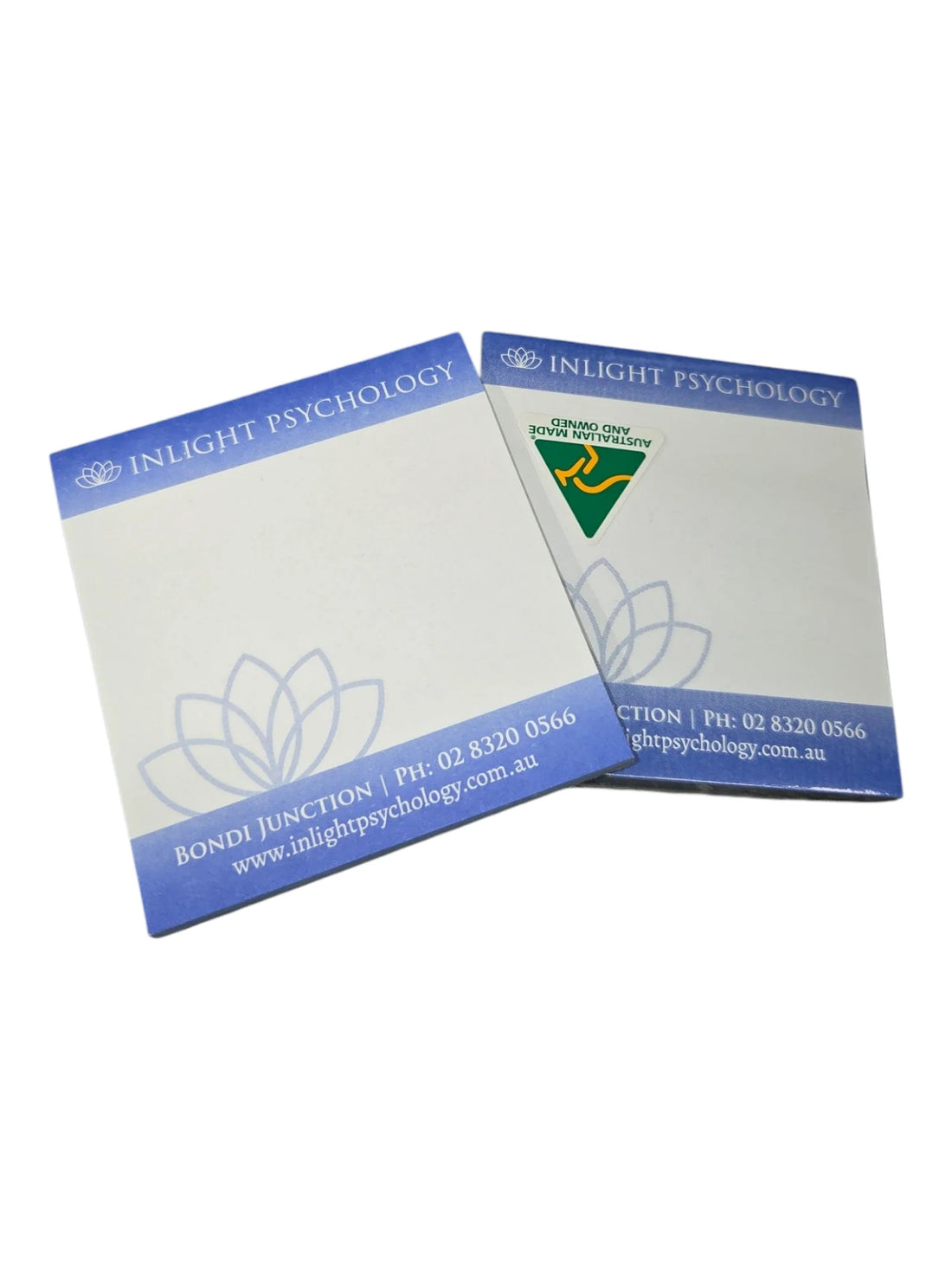
Decoding Sticky Note Colours: What to Use and When
We all know the power of sticky notes. They seamlessly help turn scattered ideas into structured plans. But did you also know that there's a surprising psychological influence behind each colour of every sticky note? Colours influence how we think and feel, and understanding these effects allows you to leverage them for your objectives. This blog explores the psychology behind sticky note colours, providing clear guidance on what to use and how to maximise impact. Let's unravel the spectrum.
Yellow: Bold and Energising
Yellow sticky notes are a workplace favourite for good reason. From a psychological perspective, yellow stimulates mental activity and promotes clarity of thought. It encourages creative thinking and problem-solving, making it ideal for brainstorming sessions or working on innovative projects. The warmth associated with yellow can also foster a sense of optimism, uplifting team morale and creating a more productive work environment. While the energising effects can be beneficial, excessive exposure to highly stimulating colours like yellow can sometimes lead to feelings of anxiety or overwhelm. Therefore, it's wise to use yellow strategically—pairing it with calmer colours or using it in moderation to ensure that it aids productivity without becoming a source of stress.
Best Use For Yellow Sticky Notes:
- For fueling brainstorming sessions
Tip: Avoid using it for long-term planning, as yellow's intensity is distracting.
Pink: Warm and Encouraging
Pink sticky notes carry an inviting and warm aura that can significantly enhance motivation and foster meaningful connections among individuals; unlike the boldness of red, pink offers a softer approach that encourages action without overwhelming it. It creates an atmosphere of positivity, comfort, and support. By integrating custom pink sticky notes, you cultivate a culture of solidarity and camaraderie; this gentle nudge can be particularly effective in settings where personal growth or team dynamics are at play.
Best Use For Pink Sticky Notes:
- For uplifting messages or reminders
Tip: Use pink sparingly to preserve its emotional impact, reserving it for moments needing a personal touch.
Blue: Focused and Calm
Where clarity and logical thinking are crucial, blue sticky notes step in. This colour, often associated with calmness, also benefits our cognitive functions. They can effectively reduce stress levels, making navigating complex information easier or solving problems. This allows individuals to tackle challenging tasks without feeling overwhelmed.
Best Use For Blue Sticky Notes:
- For organising long-term projects
Tip: Avoid using it for urgent tasks, as blue's calming effect may soften immediacy.
Green: Balanced and Progressive
Green sticky notes evoke balance, growth, and renewal, offering a middle ground between stimulation and calm. This colour boosts concentration and fosters progress, making it excellent for tasks requiring sustained effort or creativity. When you use green sticky notes for tasks like project planning, drafting ideas, or organising thoughts—you might notice an improvement in your ability to remain engaged and productive. The colour's soothing qualities make tackling challenges easier and maintaining a positive mindset.
Best Use For Green Sticky Notes:
- For tracking project milestones
Tip: Avoid high-urgency tasks, as the colour green's steady pace may lack intensity.
Purple: Creative and Unique
Purple sticky notes ignite creativity and inspiration linked to imagination and luxury. Unlike more common colours like yellow or pink, purple offers a distinctive flair that stands out, making it particularly suitable for artistic or innovative contexts. This provokes thought, encouraging individuals to explore bold ideas and think outside the box. Moreover, purple sticky notes can create a less rushed environment, which is essential for deep, creative work. The colour invites contemplation and free-flowing thought, allowing individuals to express themselves without the pressure of urgency. This creates a space where original ideas can flourish, leading to innovative solutions and breakthroughs.
Best Use For Purple Sticky Notes:
- For jotting creative ideas
Tip: Pair purple notes with mood boards to enhance creative workflows.
Red: Urgent and Action-Oriented
Red sticky notes command attention, signalling urgency and importance. When we see something red, our brains often interpret it as a signal demanding immediate attention or action. Psychologically, red heightens alertness and prompts immediate action, which can be beneficial in scenarios where quick responses are crucial. Red is intrinsically linked to alertness and urgency; it naturally stands out against most backgrounds, making it difficult to ignore. But overuse can increase stress—reserve red for critical alerts to maintain its potency.
Best Use For Red Sticky Notes:
- For critical deadlines
Tip: Use red sparingly with concise text to avoid unnecessary stress.
White: Clean and Professional
White custom-shaped sticky notes provide a neutral, professional backdrop, conveying simplicity and clarity. Unlike coloured sticky notes, which can evoke a range of emotions and may distract from the main content, white notes convey information efficiently and effectively. They ensure that the messages written on them take centre stage, allowing for better retention and understanding. This makes them an essential tool for those who value organisation without the distraction of colour.
Best Use For White Sticky Notes:
- For to-do lists
Tip: Avoid creative or urgent tasks, as white may feel understated.
Conclusion: Make Your Notes Stick
Sticky note colours do more than decorate desks—they shape how we work, think, and connect. You can select hues that drive action, enhance focus, or spark creativity by harnessing their psychological power.
